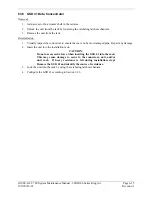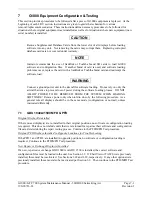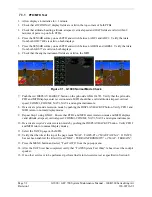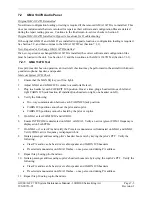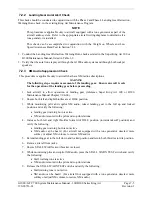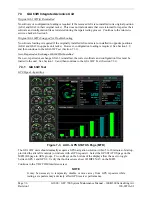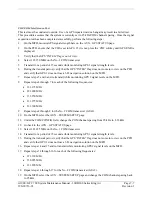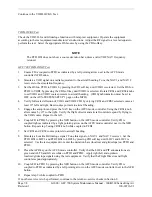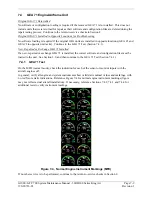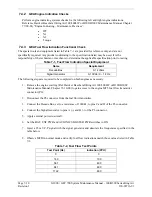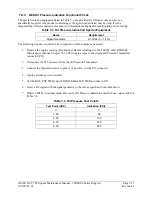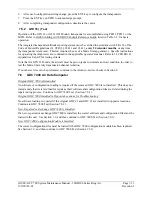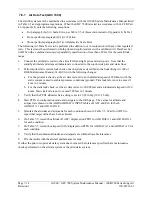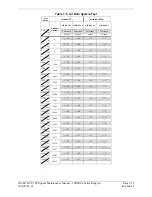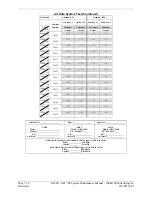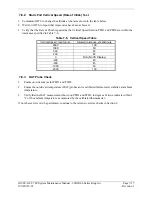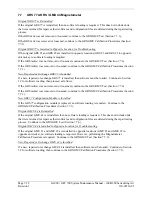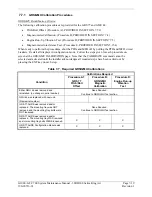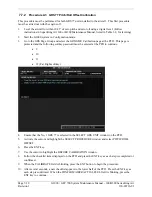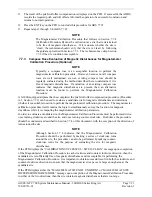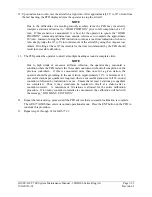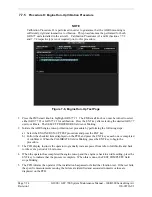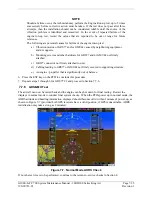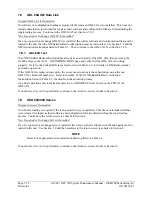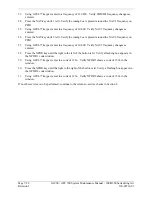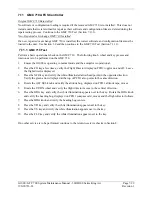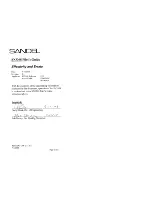
Page 7-14
G1000 / GFC 700 System Maintenance Manual - 300/B300 Series King Air
Revision 1
190-00716-01
7.6.1
Air Data Test (GDC 7400)
The G1000 system must be maintained in accordance with the G1000 System Maintenance Manual listed
in Table 1-3 and appropriate regulations. When the GDC 7400 is tested in accordance with 14 CFR Part
43, Appendix E, note the following exceptions:
•
For paragraph (b)(1)(i) Scale Error, use Table 7-5 of this section instead of Appendix E, Table I
•
Do not perform paragraph (b)(1)(iv) Friction
•
Do not perform paragraph (b)(1)(vi) Barametric Scale Error
The following Air Data Test is to be performed in addition to or in conjunction with any other regulated
tests. This test must be performed on both pilot and copilot systems with a calibrated Air Data Test Set
(ADTS) with a combined accuracy/repeatability specification of less than ±20 feet for the test altitude
range.
1.
Connect the pitot/static tester to the aircraft left and right pitot and static ports. Note that the
standby altimeter and airspeed indicator are connected to the copilot side pitot and static lines.
2.
Perform pitot static system leak check of each system as described in the Super King Air 300 or
B300 Maintenance Manual, 34-00-00, with the following changes:
a.
For the pitot leak check, set the air data test unit to an indicated airspeed of 200 knots with the
static system vented to ambient pressure conditions (ground). Pitot leak rate is not to exceed 1
knot in 1 minute.
b.
For the static leak check, set the air data test set to 30,000 feet and an indicated airspeed of 120
knots. Static leak rate is not to exceed 300 feet in 1 minute.
3.
Verify that the PFD1 altimeter baro setting is set to 29.92 in Hg (1013.25 mb).
4.
Start PFD1 in configuration mode and navigate to the GRS page. The values for altitude and
airspeed are shown on the AHRS/AIR DATA INPUT table as B ALT and IAS for both
AIR DATA 1 and AIR DATA 2.
5.
Simulate the altitudes and airspeeds for each condition shown in Table 7-5. Wait for ADTS to
report that target values have been achieved.
6.
On Table 7-5, record the altitude (B ALT) displayed on PFD1 for AIR DATA 1 and AIR DATA 2
for each condition.
7.
On Table 7-5, record the airspeed (IAS) displayed on PFD1 for AIR DATA 1 and AIR DATA 2 for
each condition.
8.
Verify that the indicated altitudes and airspeeds are within allowable tolerances.
9.
File the results with the aircraft maintenance records.
If either the pilot or copilot air data system does not meet the tolerances specified, have maintenance
checks performed on the air data system or the pitot/static system.
Summary of Contents for Cessna Caravan G1000
Page 2: ...This page intentionally left blank...
Page 89: ......

